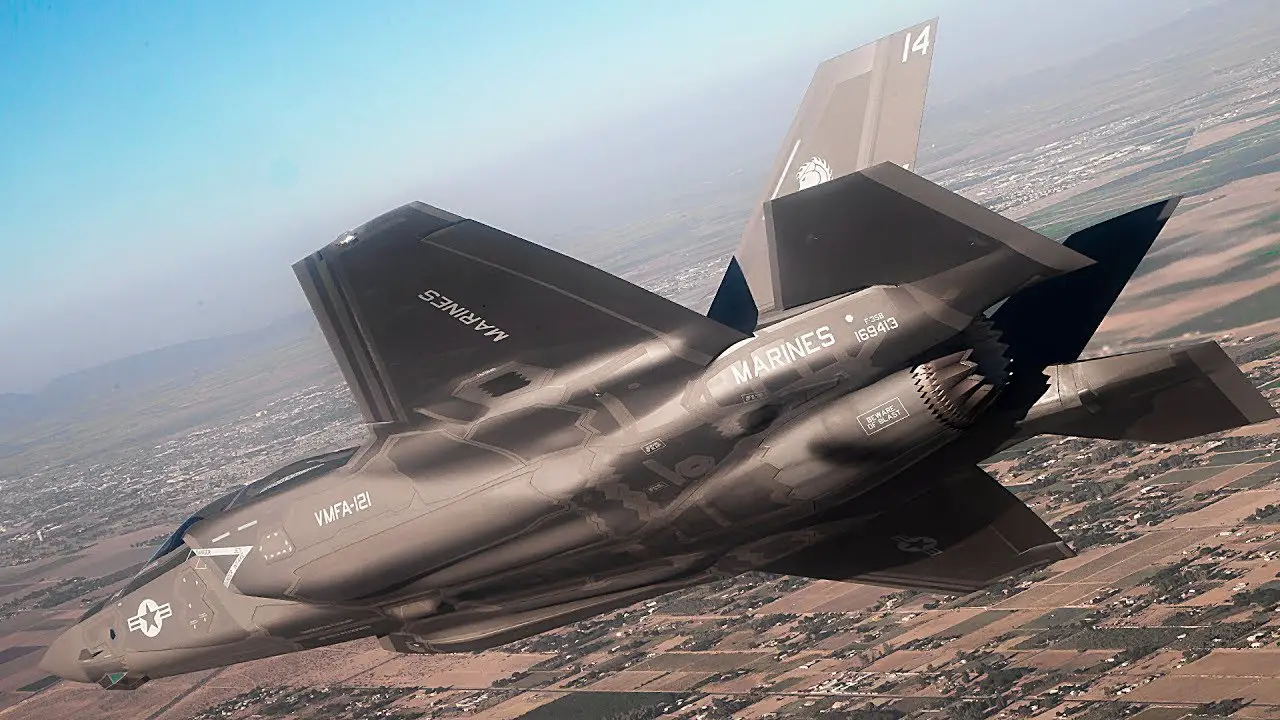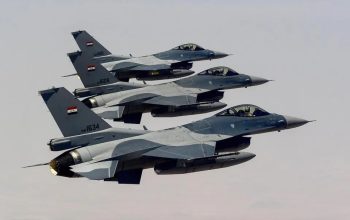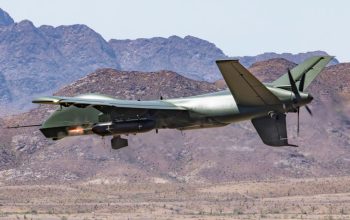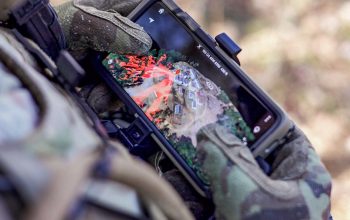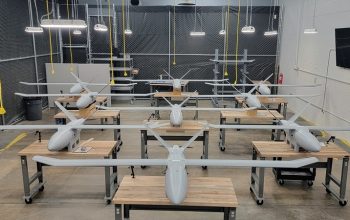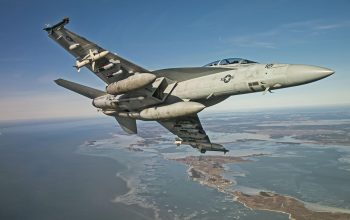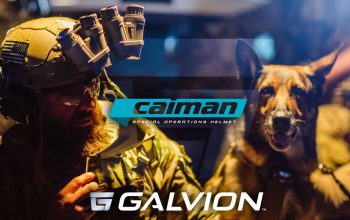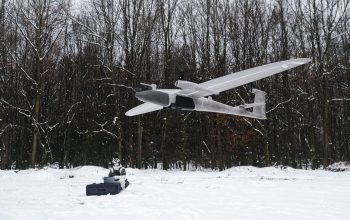A U.S. Marine Corps F-35B Lightning II multirole fighter conducts Tactical Intercept/Air Combat Maneuvering exercise during Weapons and Tactics Instructor Course (WTI) near Yuma, Arizona.
The F-35B is the short takeoff and vertical landing (STOVL) variant of the aircraft. Similar in size to the A variant, the B sacrifices about a third of the A variant’s fuel volume to accommodate the vertical flight system.
Unlike other variants, the F-35B has no landing hook. The “STOVL/HOOK” control instead engages conversion between normal and vertical flight.[330] Jet thrust is sent directly downwards during vertical flight; the nozzle is being redesigned to spread the output across an oval rather than circular shape in order to limit damage to asphalt and ship decks. The variant’s three-bearing swivel nozzle that directs the full thrust of the engine is moved by a “fueldraulic” actuator using pressurized fuel as the working fluid.
The United States Marine Corps plans to purchase 340 F-35Bs, to replace current inventories of both the F/A-18 Hornet (A, B, C and D-models), and the AV-8B Harrier II, in the fighter and attack roles.
Known as distributed STOVL operations (DSO), Marine F-35Bs would sustain operations from temporary bases in allied territory within the range of hostile ballistic and cruise missiles, but be moved between temporary locations inside the enemy’s 24- to 48-hour targeting cycle. This strategy accounts for the F-35B’s short range, the shortest of the three variants, with mobile forward arming and refueling points (M-Farps) accommodating KC-130 and MV-22 Osprey aircraft to rearm and refuel the jets, as well as littoral areas for sea links of mobile distribution sites on land. M-Farps could be based on small airfields, multi-lane roads, or damaged main bases, while F-35Bs would return to U.S. Navy ships, rear-area U.S. Air Force bases, or friendly carriers for scheduled maintenance; metal planking would be needed to protect unprepared roads from the F-35B’s engine exhaust, which would be moved between sites by helicopters, and the Marines are studying lighter and more heat-resistant products.
Factual, impartial and current. AiirSource Military brings you the latest insights from the United States Armed Forces. Visit our channel for in-depth and extended coverage on military events and missions: http://www.youtube.com/AiirSource
